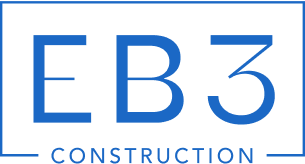Commercial wood framing typically costs between $18 and $45 per square foot. This wide range reflects the varied demands of commercial construction projects across different markets and specifications.
The final cost depends on several key factors including wood species selection, architectural complexity, regional labor rates, and project location. Understanding this range helps developers and property owners set realistic framing budgets from the start of planning through construction completion.
Which Factors Drive Commercial Wood Framing Cost Per Square Foot?

Several key elements determine commercial wood framing pricing, each affecting the final cost per square foot in different ways. Understanding these drivers helps project teams make informed decisions during the planning phase.
Type Of Wood
Wood selection directly impacts both material costs and structural performance. Hardwoods like oak provide superior strength and durability but command higher prices than softwoods such as pine or Douglas fir. Engineered wood products like laminated veneer lumber (LVL) and glue-laminated timber (glulam) typically cost more upfront than standard lumber but offer enhanced load-bearing capacity and dimensional stability.
Softwoods remain the most economical choice for straightforward commercial applications. They work well for basic structures where strength requirements match standard lumber specifications. The choice between hardwood, softwood, and engineered options often depends on the specific structural demands and budget parameters of each project.
Design Complexity
Architectural elements significantly affect framing costs through increased labor requirements and material waste. Simple rectangular buildings with standard dimensions minimize both cutting time and material usage. Complex designs featuring curves, slopes, and intricate details require precise cuts, custom fabrication, and additional structural reinforcement.
Unusual angles, irregular shapes, and multi-level designs increase the time skilled carpenters spend on each component. These projects often require specialized joints, additional bracing, and careful coordination between different building systems. We account for this complexity when estimating both material quantities and labor hours.
Labor Costs
Skilled carpentry labor represents a major portion of commercial wood framing expenses. Complex projects require experienced crews familiar with commercial building codes and structural requirements. Labor rates vary based on project scope, timeline constraints, and the skill level needed for specific tasks.
Specialized work like engineered timber installation or intricate architectural details commands premium rates. Union markets typically show higher labor costs than non-union areas. Projects requiring overtime or accelerated schedules also increase hourly rates, affecting the overall cost per square foot.
Location Impacts
Geographic location influences costs through multiple channels. Urban markets generally show higher pricing due to increased labor rates, stricter building codes, and limited material storage space. Rural areas often provide more cost-effective construction environments with lower overhead expenses and competitive contractor pricing.
Transportation costs significantly affect material pricing based on distance from lumber suppliers. Projects located far from major wood-producing regions face higher shipping expenses, particularly for large timber members. Regional wage standards, permit fees, and local building requirements all contribute to location-based pricing variations across different markets.
What Are Typical Cost Tiers And What Do They Include?
Commercial wood framing projects typically fall into three pricing tiers. Each tier reflects different material quality levels, design complexity, and project scope requirements that we encounter regularly in the field.
Low-End Pricing Structure
Low-end commercial wood framing runs approximately $18 per square foot. These projects use basic softwood lumber like dimensional pine or fir in standard sizes.
Straightforward layouts dominate this tier, with minimal custom cuts or complex connections. We typically see simple rectangular structures with standard spacing and minimal architectural features that require specialized framing techniques.
Mid-Range Project Characteristics
Mid-range framing costs fall between $25 and $35 per square foot. This tier accommodates moderate design complexity while incorporating better material choices for enhanced structural performance.
Projects in this range often include engineered wood products like LVL beams or glulam members for longer spans. We may specify select-grade lumber or hardwood species where strength and appearance matter. Design elements like curved walls, varied ceiling heights, or custom connections push projects into this tier.
High-End Commercial Applications
High-end wood framing reaches $45 per square foot and beyond. These projects emphasize premium materials, complex architectural designs, and sustainable building practices.
We coordinate intricate framing systems that support unique structural requirements. Premium wood choices include sustainably sourced hardwoods, architectural-grade engineered products, and specialized connections for demanding applications. Projects often pursue specific aesthetic goals or environmental certifications that require careful material selection and precise installation techniques.
Regional market conditions, local labor rates, and project scope significantly influence these baseline figures. Urban markets typically see higher costs across all tiers, while rural locations may offer more competitive pricing. We adjust our estimates based on zip code analysis and current material availability when developing project budgets.
How Do Framing Approaches And Material Choices Affect Cost And Performance?

Different framing approaches produce distinct cost and performance outcomes for commercial wood construction. We coordinate these choices based on project requirements, budget parameters, and structural demands.
Traditional Wood Framing
Traditional wood framing represents the most cost-effective approach for straightforward commercial structures. This method relies on standard lumber sizes like 2x10s, 2x12s, and engineered lumber in conventional dimensions.
We use dimensional lumber for walls, floors, and roof systems where spans remain moderate and loading stays within typical ranges. The approach works well for retail spaces, small office buildings, and warehouse structures without complex architectural features.
Standard framing keeps material costs low and simplifies construction sequencing. Most framing crews understand conventional methods, which reduces labor complexity and potential errors during installation.
Engineered Wood Systems
Engineered wood products like LVL and glulam carry higher upfront costs but deliver superior strength and stability characteristics. These products handle longer spans and heavier loads compared to traditional lumber.
LVL beams provide consistent performance across their length and resist warping or shrinkage that can affect standard lumber. Glulam members offer architectural appeal for exposed applications while maintaining structural integrity.
We specify engineered products when projects require fewer intermediate supports or when load-bearing capacity exceeds what traditional framing can handle efficiently. The reduced need for additional columns or bearing walls often offsets the higher material costs.
Hybrid Framing Approaches
Hybrid framing combines standard lumber with engineered members to balance cost and performance requirements. We might use LVL beams for main spans while employing dimensional lumber for secondary framing elements.
This approach allows us to optimize material placement based on specific loading conditions and span requirements. Critical load paths receive engineered products while less demanding areas use conventional framing.
Hybrid systems work particularly well when projects have varying structural demands across different building areas. We can match material specifications to actual performance needs rather than over-engineering the entire structure.
Post-Frame Construction Context
Post-frame systems represent another commercial wood option, typically running $20 to $35 per square foot for shell construction. These systems use large posts and trusses to create clear-span spaces suitable for agricultural or industrial applications.
The shell cost covers the basic structural framework, but total project expenses increase significantly with finish work, mechanical systems, and architectural details. We coordinate post-frame specifications when clients need large, unobstructed interior spaces.
Steel framing often increases overall project costs compared to wood alternatives, though it provides benefits for specific applications requiring long spans or heavy loading conditions. We evaluate both materials during design development to determine the most suitable structural approach for each project’s requirements.
What Strategies Help Control Commercial Wood Framing Cost Per Square Foot?
Building components off-site through prefabrication cuts on-site labor hours while reducing field errors that drive up costs. We coordinate shop fabrication for trusses, wall panels, and beam assemblies to arrive ready for installation. This approach removes weather delays from critical framing work and allows crews to focus on assembly rather than measuring and cutting.
The controlled environment of fabrication facilities produces more accurate cuts and joints. Material waste drops significantly when components arrive pre-cut to exact specifications. Labor efficiency improves as crews spend time positioning and fastening rather than handling raw lumber.
Technology Integration Drives Project Coordination
CAD and BIM software streamline the design-to-construction process by identifying conflicts before crews reach the field. We use these tools to coordinate mechanical, electrical, and plumbing systems with the wood frame structure. Early clash detection prevents costly rework and material waste.
Project software enables real-time updates between design changes and field operations. When architects modify beam sizes or connection details, the updated information reaches fabricators and field crews simultaneously. This coordination reduces the errors that typically add 10 to 15 percent to framing costs.
Digital models also improve material ordering accuracy. Precise quantity takeoffs from BIM models minimize over-ordering while ensuring adequate materials arrive when needed.
Value Engineering Optimizes Design Decisions
We work with design teams to evaluate span lengths, member sizes, and connection methods that balance performance with cost. Sometimes switching from longer spans with larger beams to shorter spans with standard lumber reduces overall framing costs. Other projects benefit from engineered wood products that eliminate the need for additional structural supports.
Value engineering sessions examine wood species selection based on load requirements and availability. Douglas fir might work as effectively as premium hardwoods for certain applications while delivering significant savings. These discussions happen during design development when changes create the least disruption.
Connection details receive similar scrutiny. Standard bolted connections often cost less than specialized hardware while meeting structural requirements. We evaluate these trade-offs with structural engineers to maintain safety while controlling costs.
Sustainable Sourcing Aligns With Project Goals
FSC-certified wood typically adds 5 to 10 percent to material costs but supports environmental objectives that many developers prioritize. We source certified lumber when sustainability goals justify the premium. Some projects pursue LEED certification or other green building standards that require documented sustainable materials.
Regional sourcing reduces transportation costs while supporting local suppliers. Wood harvested and milled within 500 miles of the project site often costs less than materials shipped across the country. Local sourcing also reduces delivery delays that can impact construction schedules.
Responsibly managed forests provide consistent quality while meeting environmental standards. We work with suppliers who demonstrate sustainable harvesting practices and maintain chain-of-custody documentation.
Conclusion: Budgeting Next Steps For Commercial Wood Framing

Commercial wood framing cost per square foot falls between $18 and $45, but successful budgeting requires refining this range based on your specific project parameters. Wood type selection directly affects both upfront costs and long-term performance. Design complexity influences material quantities and labor hours. Regional factors like labor availability and transportation costs create significant pricing variations across zip codes.
We approach each project by matching framing systems to structural requirements and budget constraints. Traditional wood framing works for simple commercial layouts with standard spans. Engineered products like LVL and glulam handle complex loads and longer spans despite higher material costs. Hybrid approaches balance performance needs with cost control by strategically placing engineered members where structural demands require them. Prefabrication reduces field labor and improves quality control. CAD and BIM integration prevents costly rework through better coordination. Value engineering sessions identify opportunities to optimize designs without compromising structural integrity.
Ready to develop accurate cost estimates for your commercial wood framing project? Contact EB3 Construction for zip-code-based pricing and expert guidance.




